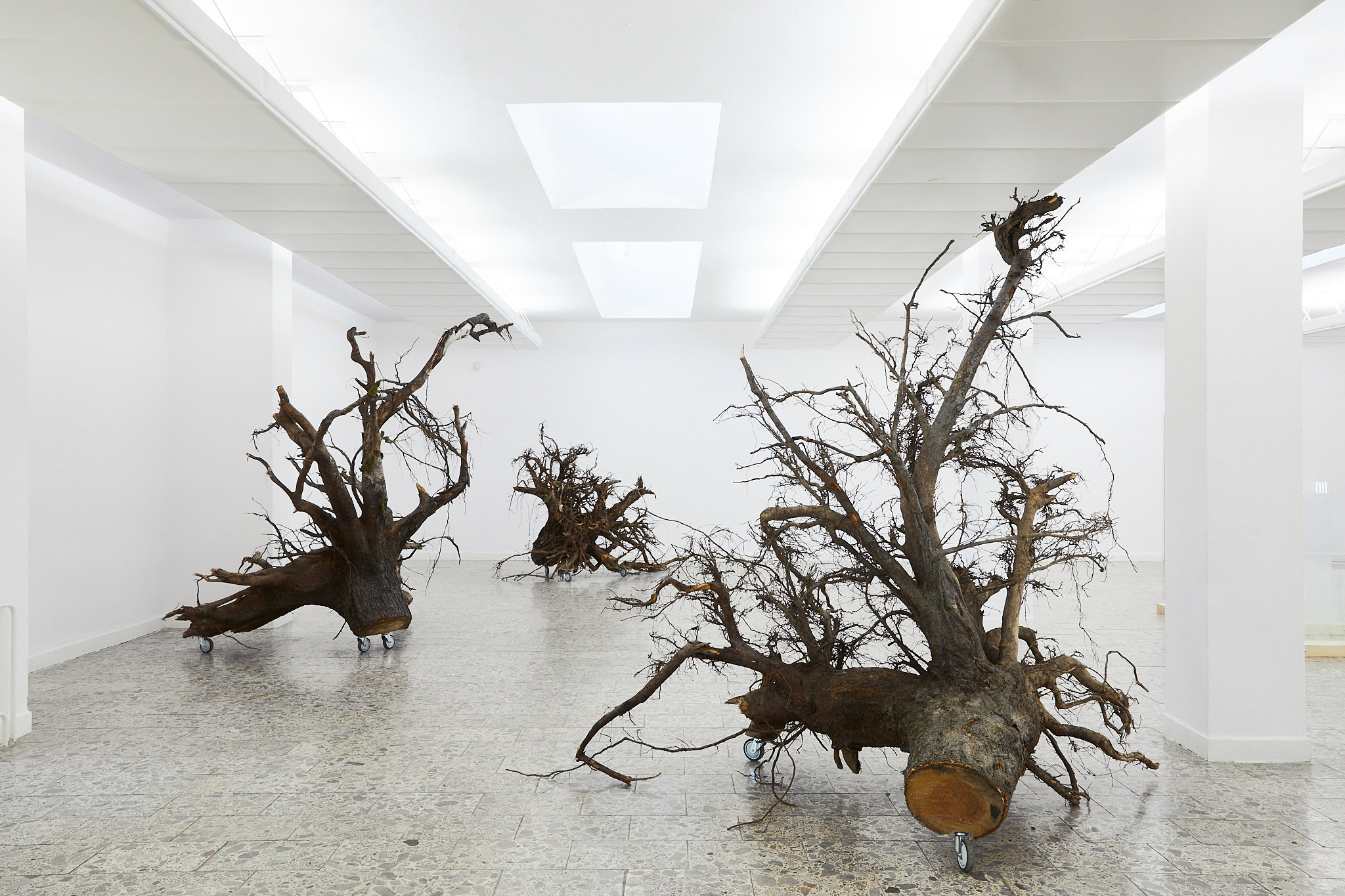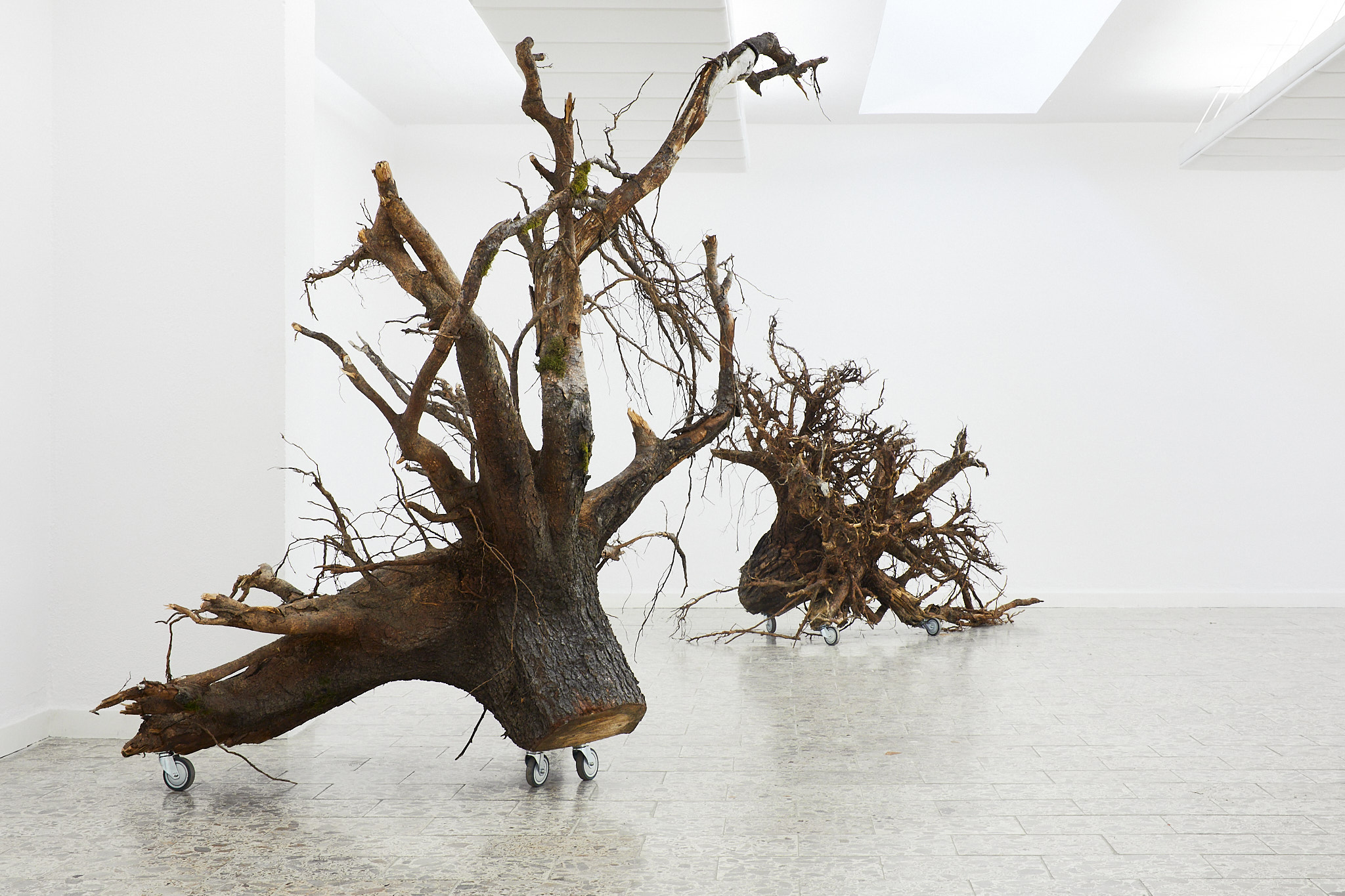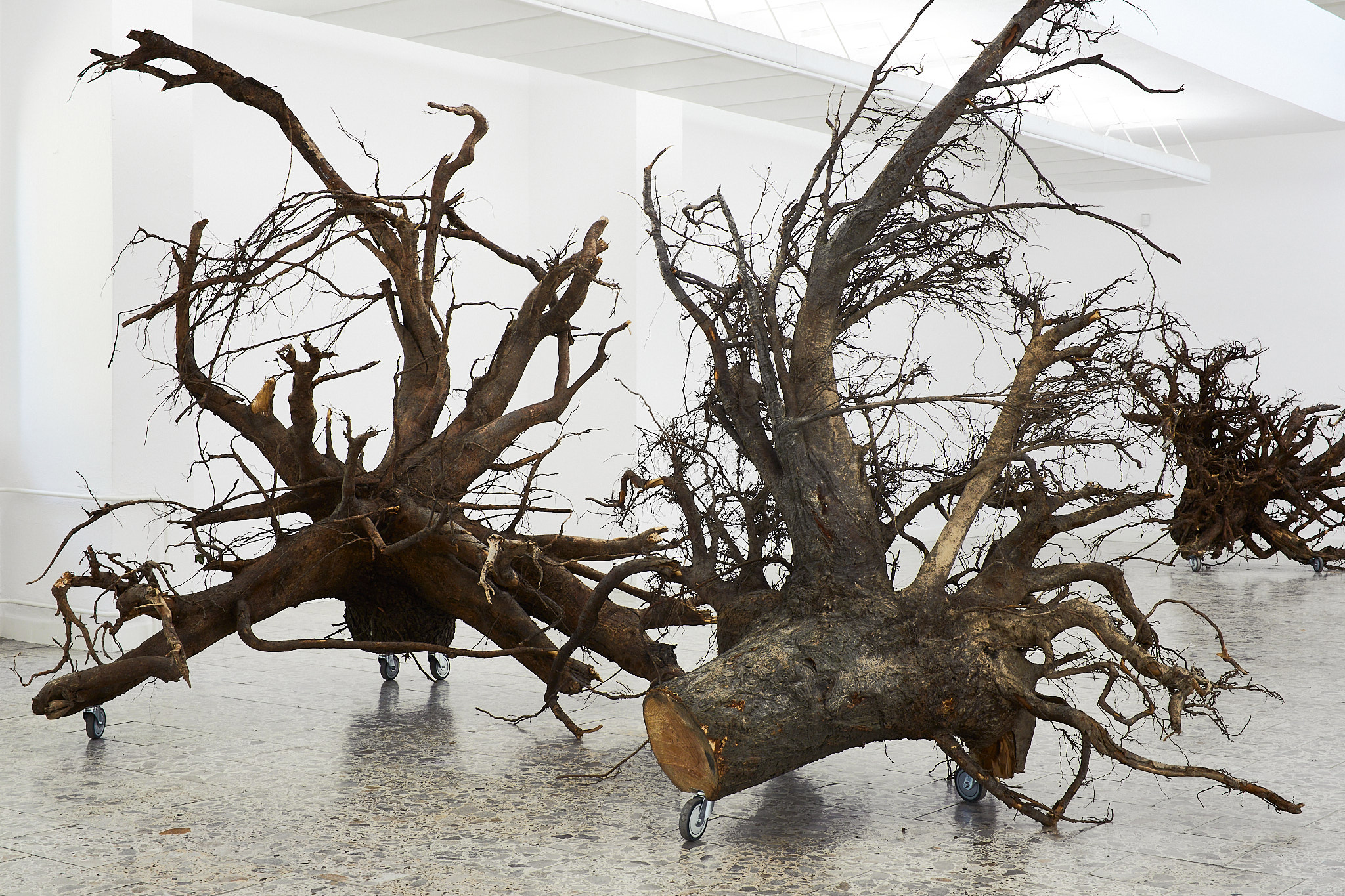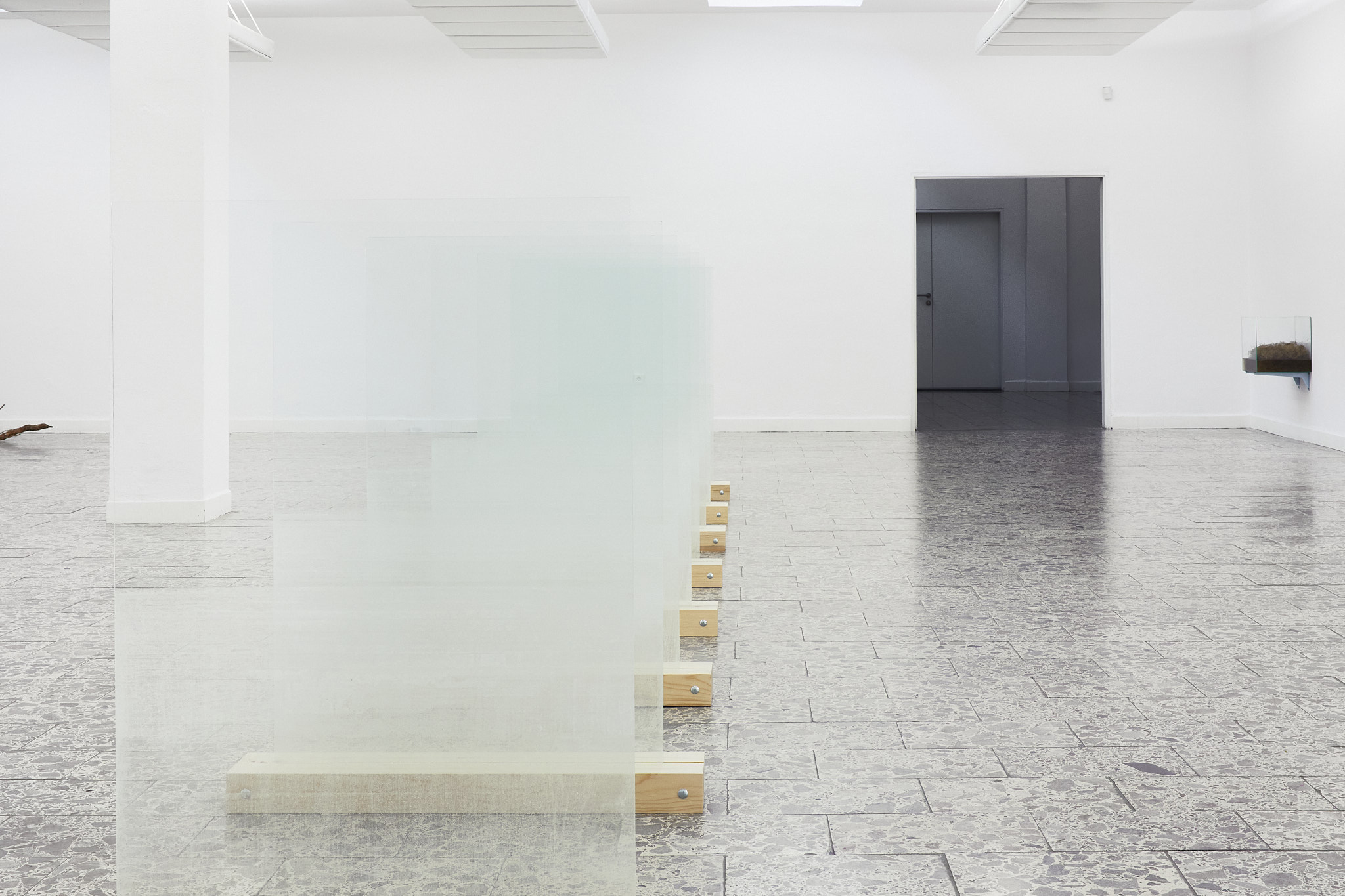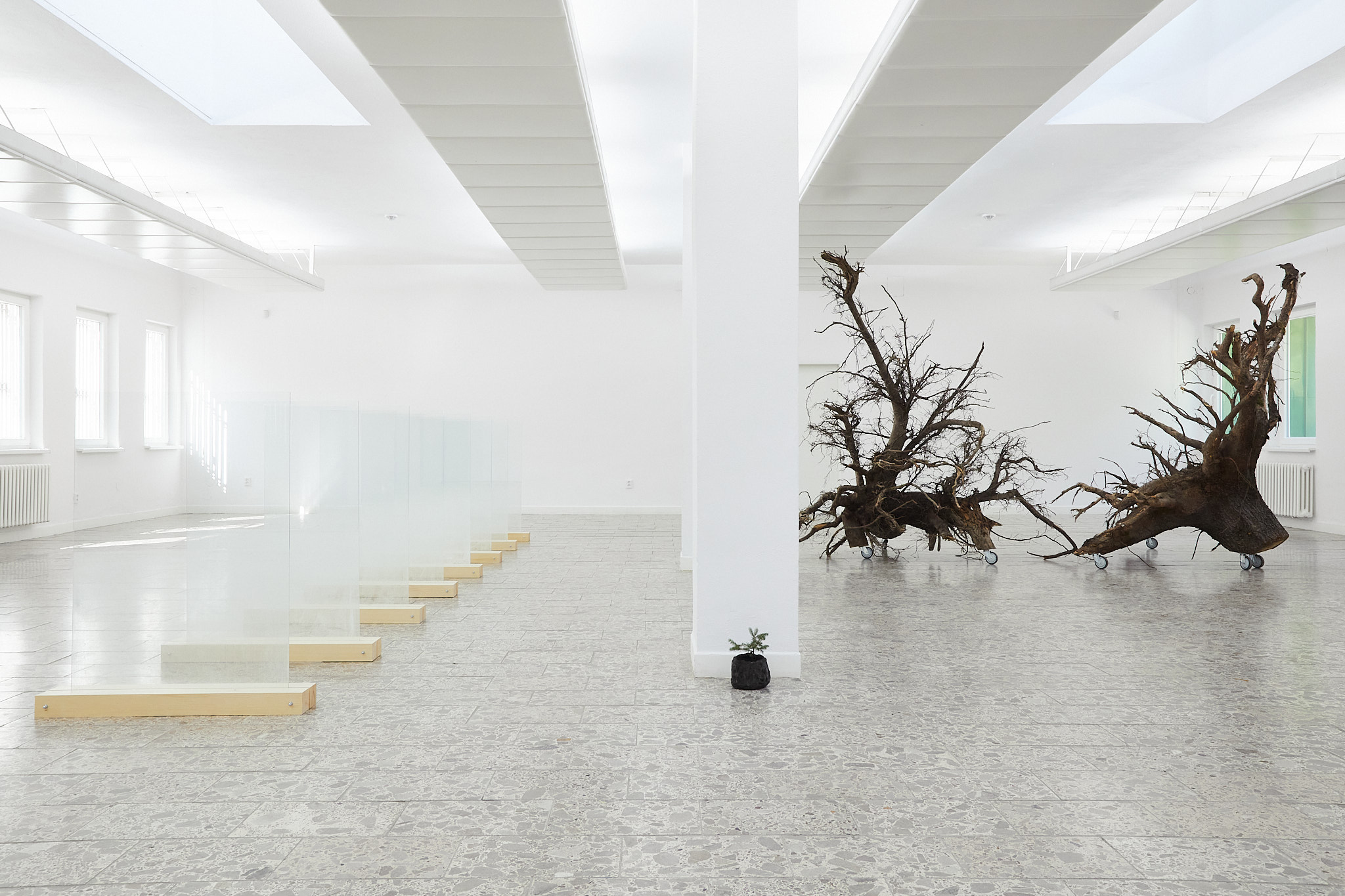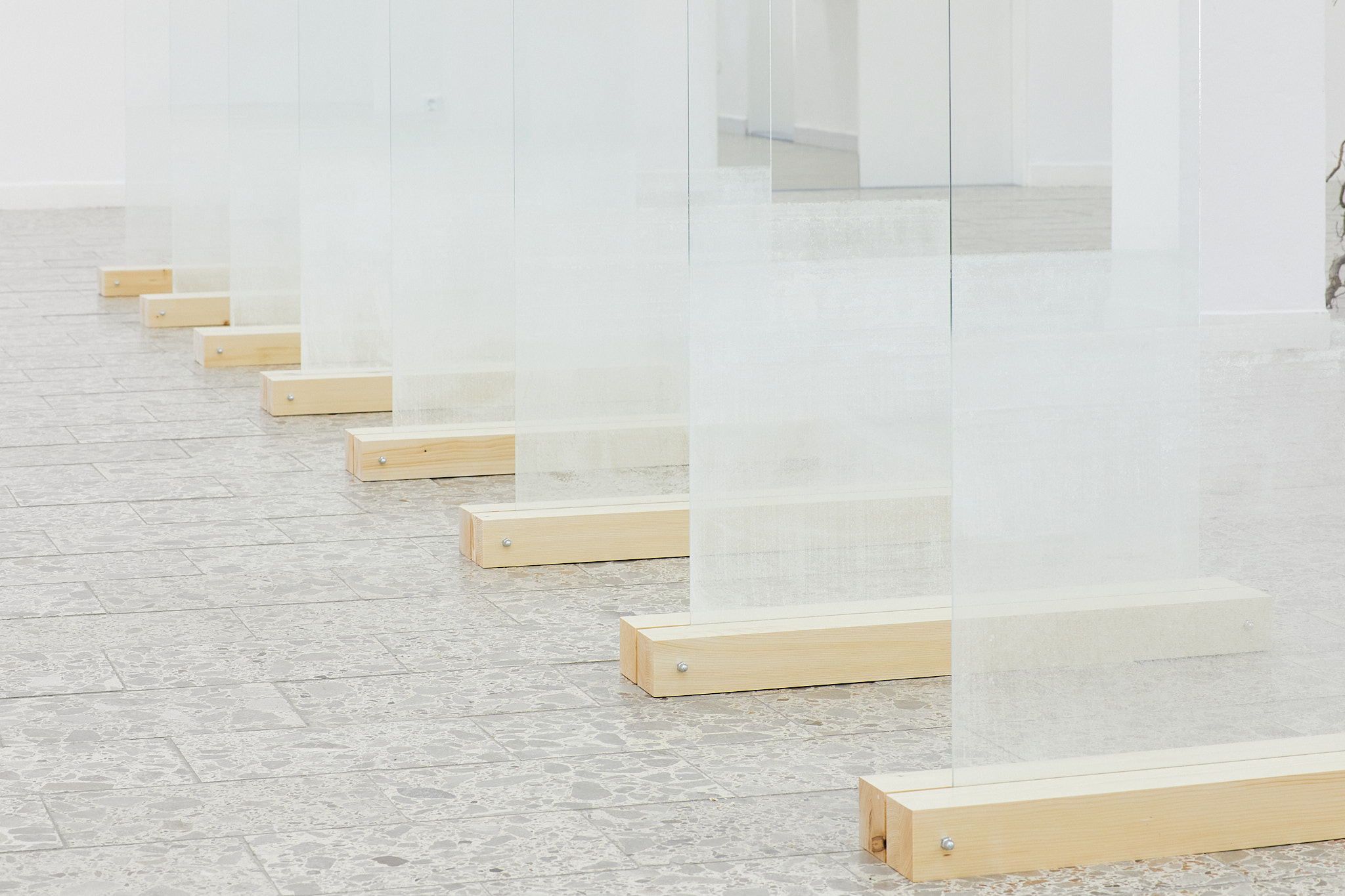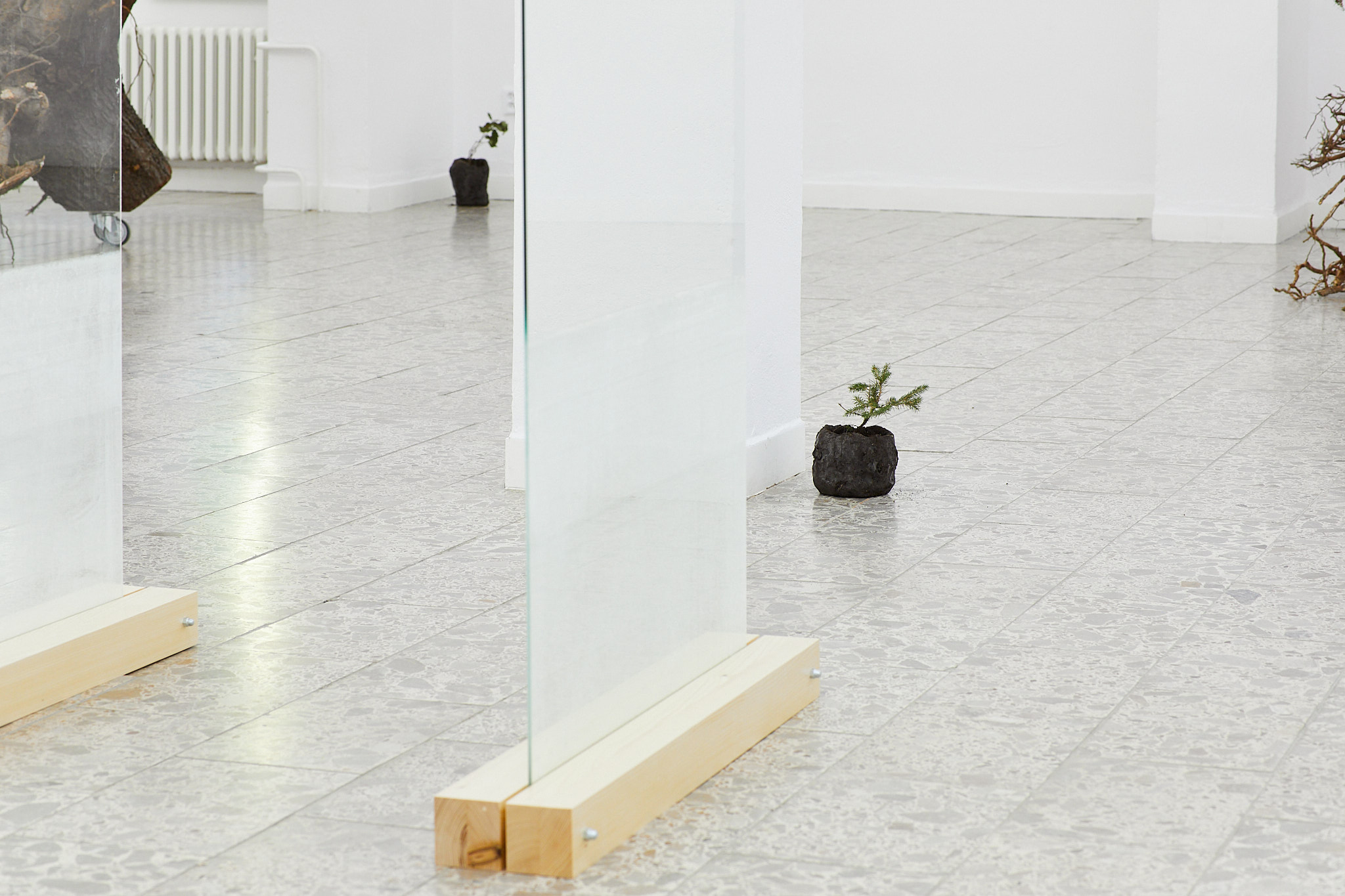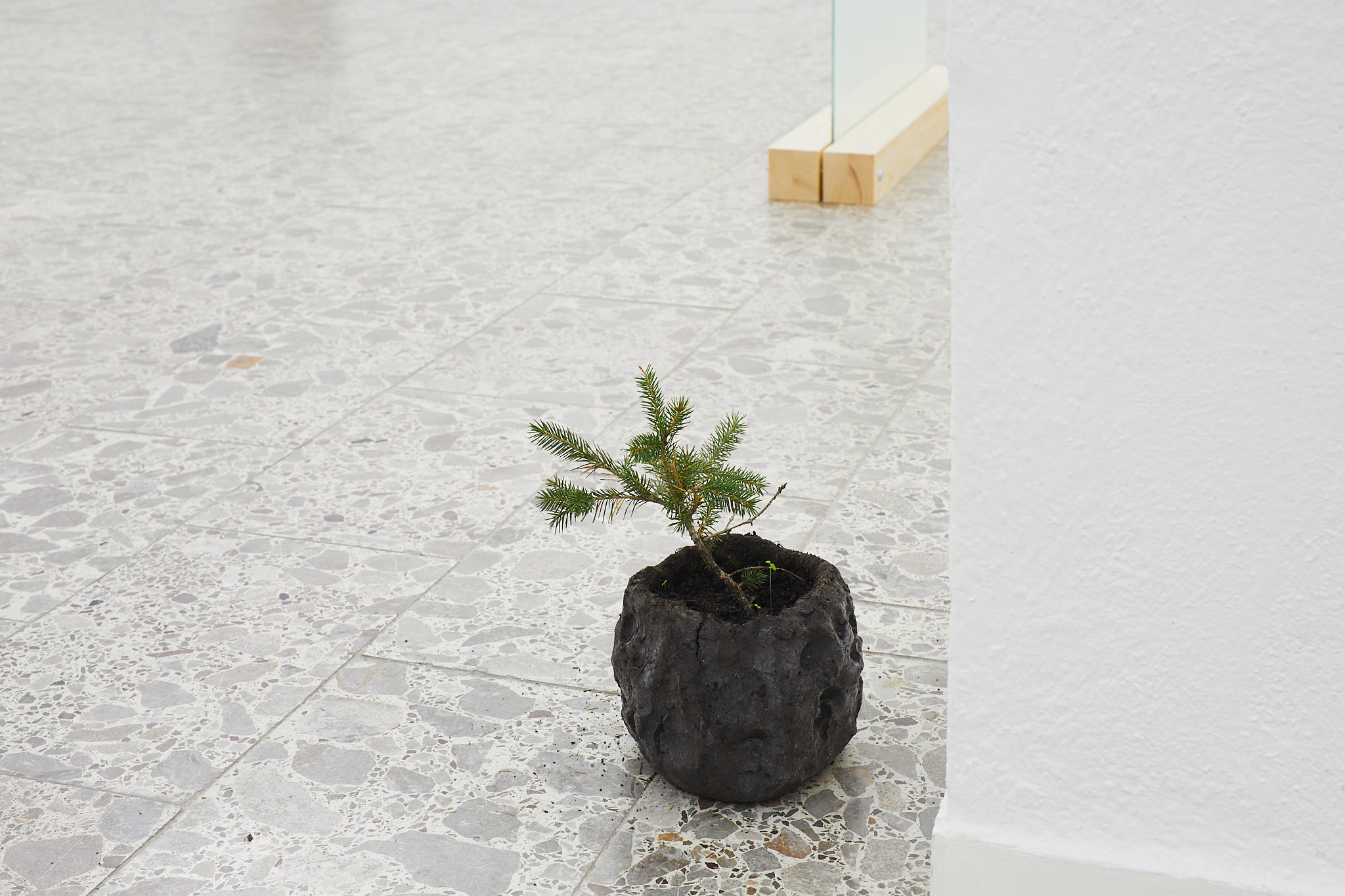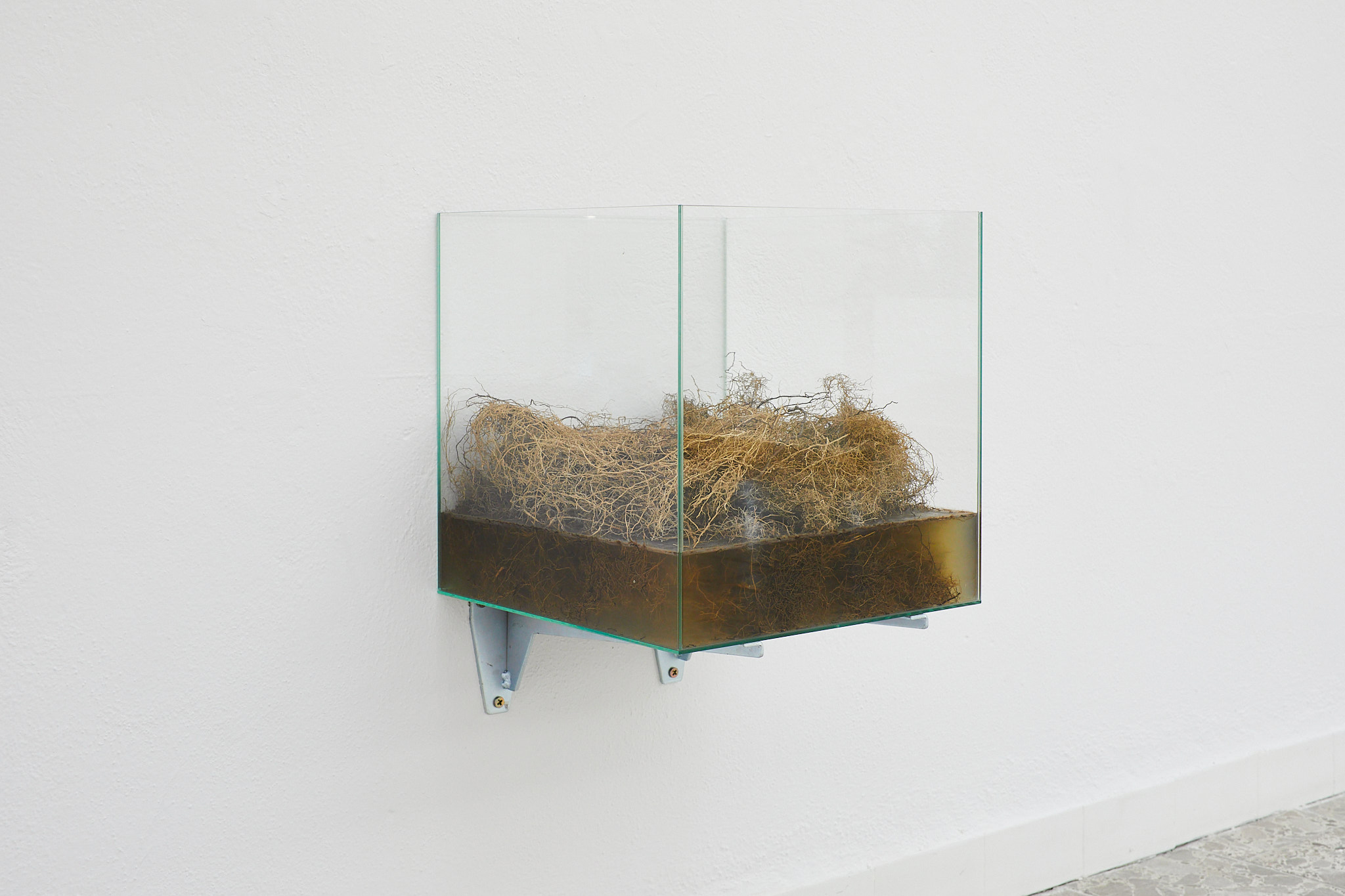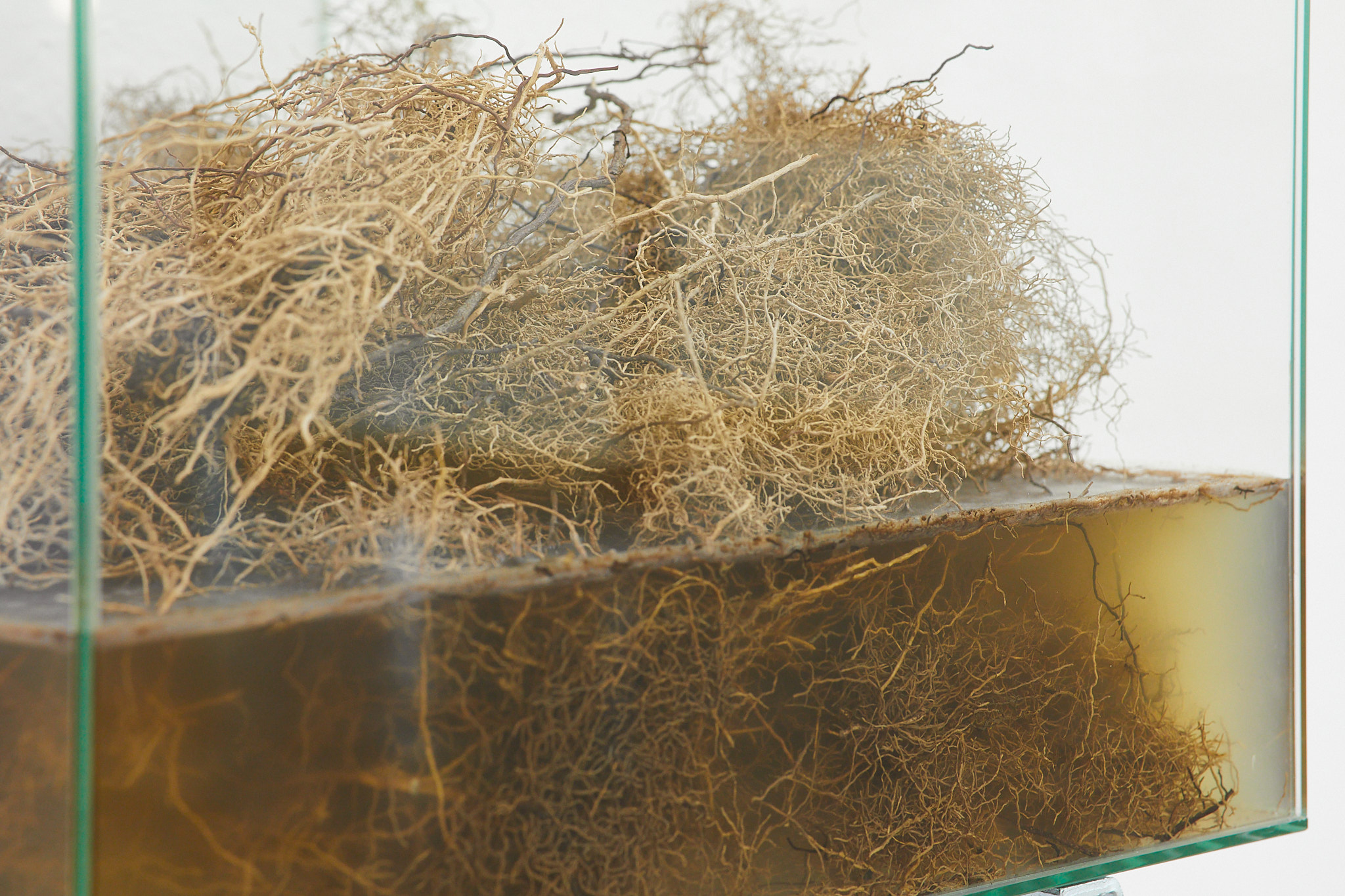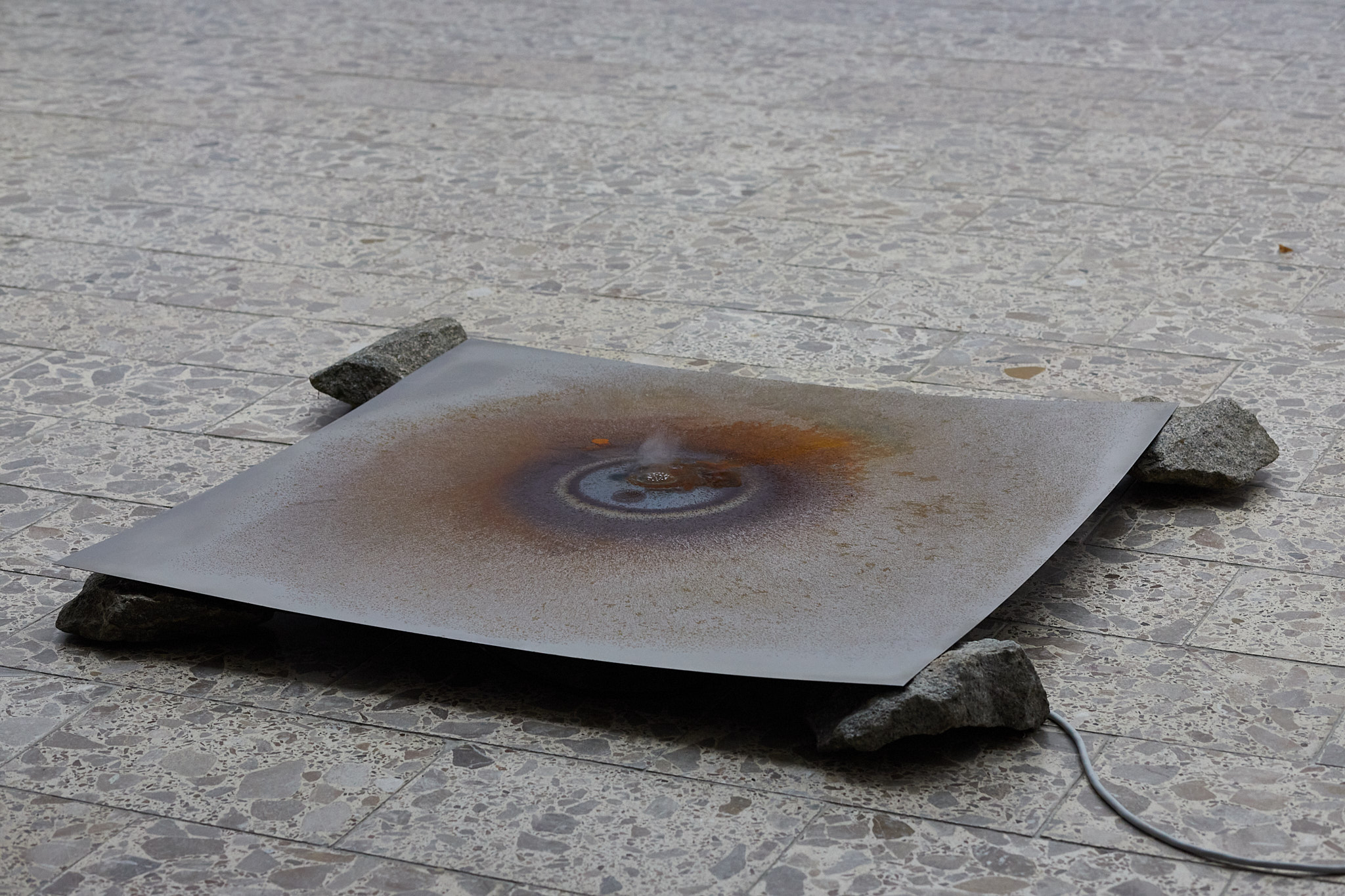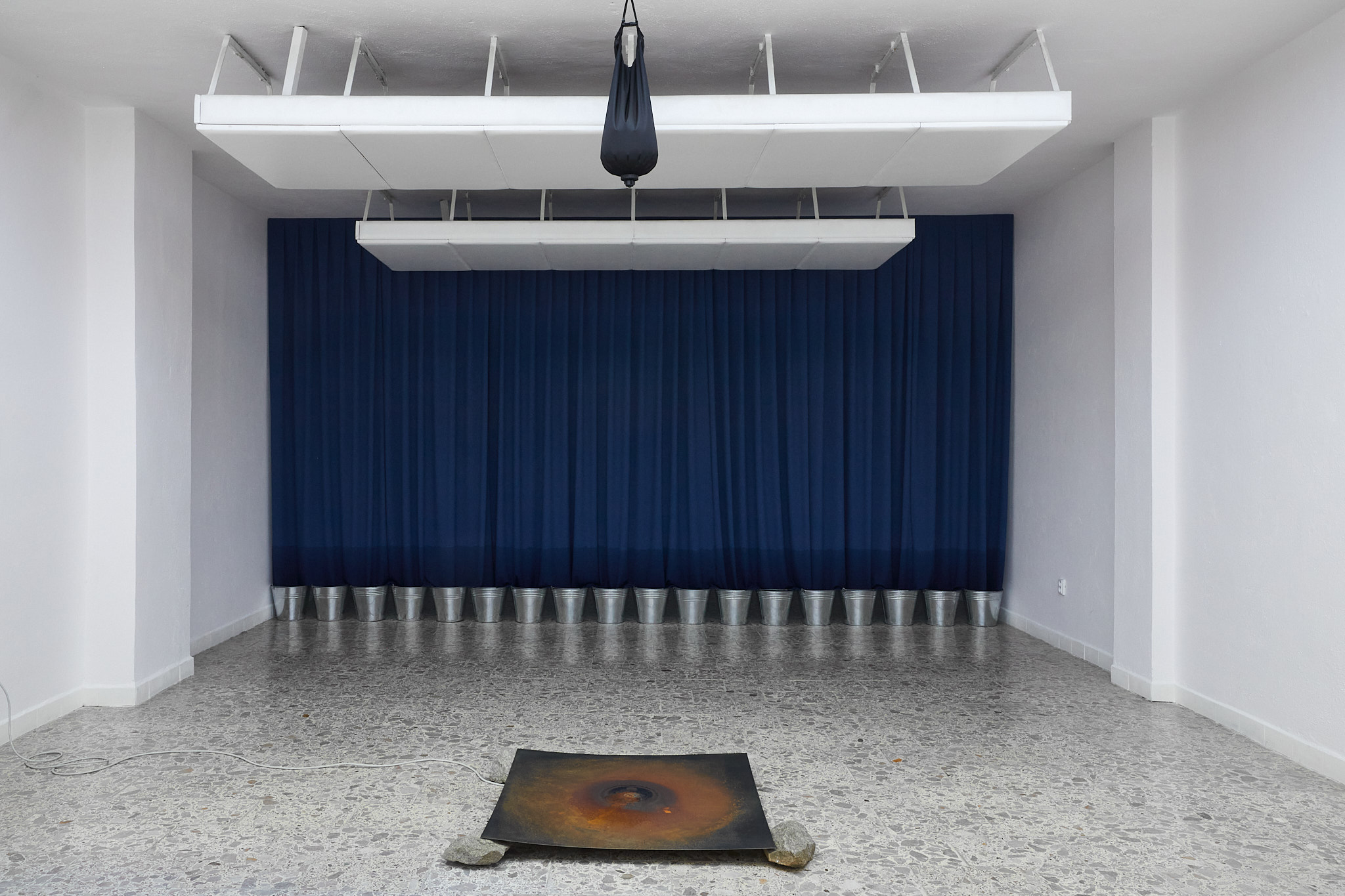Artist: Marta Fišerová Cwiklinski
Title: The land of thousand of broken threads
Venue: Blansko Gallery
Curator: Jana Písaříková
Photo: Polina Davydenko
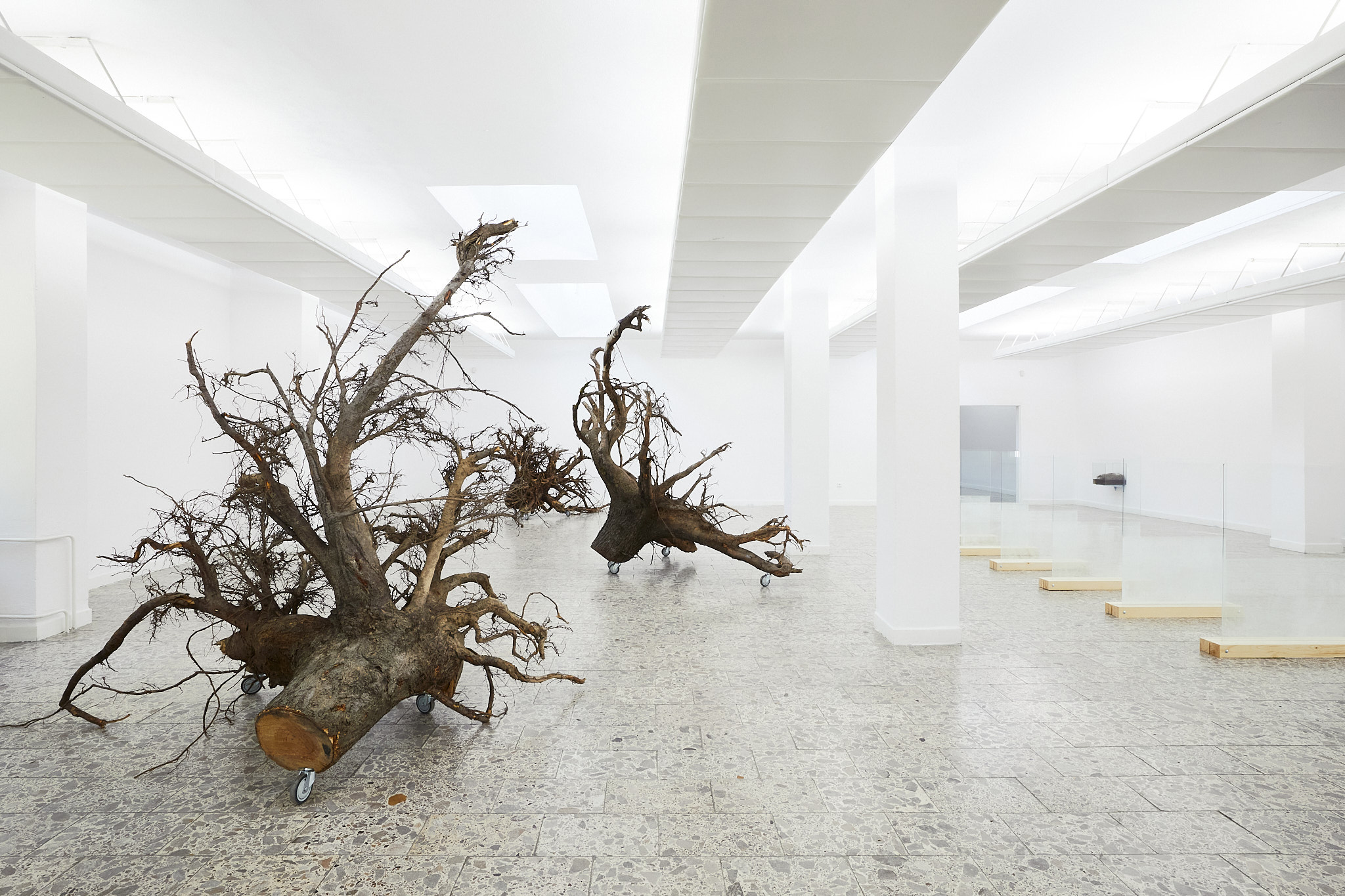
As a result of the drought and the spread of the bark beetle, the Central European landscape has changed radically in the last decade. In the Czech Republic, deep forests of Vysočina, Jeseníky, Žďárské vrchy and many other places are gradually becoming clearings and clear-cuts. Timber is an extremely affordable commodity, and in the south of Europe, the Chinese are buying up entire ports so they can transport and process thousands of tonnes of timber faster as part of their expansive industrial production. Buying wood now pays off!
From friends working in the forest, I often hear that unoriginal spruces are being planted again abundantly, although their root system is superficial, does not retain much water and is not a drought-resistant type of tree. However, it is still the most advantageous commodity in the timber market due to its rapid growth and upright wood. Are we really uneducated and, due to our instinct of ever-increasing consumption, doomed to collapse?
In a landscape of thousands of broken threads*, its individual elements lose the ability of mutual empathy and dialogue and they cease to be part of the whole. In the landscape of thousands of broken threads, only the strongest individuals parasitizing on the rest are sprouting and growing in the short term. In the text of Down to Earth, Bruno Latour says that forecasts of the impact of climate change are leading elites to cut themselves off from the rest of the human population. It is necessary to cut the thread, only then they will not lose their wealth. To succeed, they deny the possibility of a climate upheaval and divert attention from it to other partial problems, looking for substitute culprits who are, in essence, only the first victims.
Although Marta Fišerová Cwiklinski’s installation deals with the forest, its role in terms of maintaining water in the landscape and the fate of wood as a commodity, at the same time, we can understand it as a demonstration of the universal principles of cyclicality and continuity of natural processes. These, as the naturalist Alexander von Humboldt demonstrated, never take place in isolation from each other, but on the contrary in mutual connections and reactions.
Looking at the devastated forests, we can think about what we actually see and what physically enters our individual lives. With the disappearing forests, part of our cultural memory is being lost and a radically new situation is emerging. Climate change is a key player.
*The title of the exhibition refers to the scientist Alexander von Humboldt and development of his metaphor of “Thousands of threads”, which form a network of relationships and connections in nature. Humboldt was the first person to notice (as early as the beginning of the 19th century) that the individual elements of nature do not work on their own, but that they are closely intertwined relationships. Humboldt stated that if one element is disrupted, the whole system collapses.
